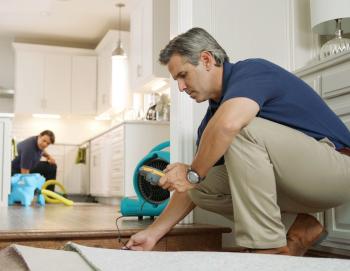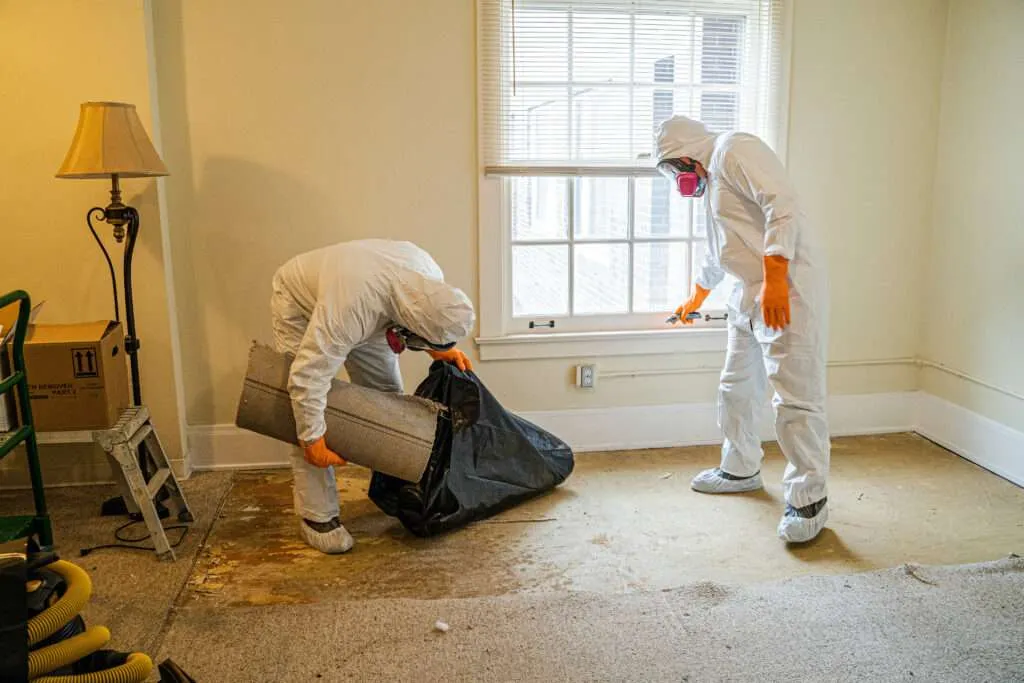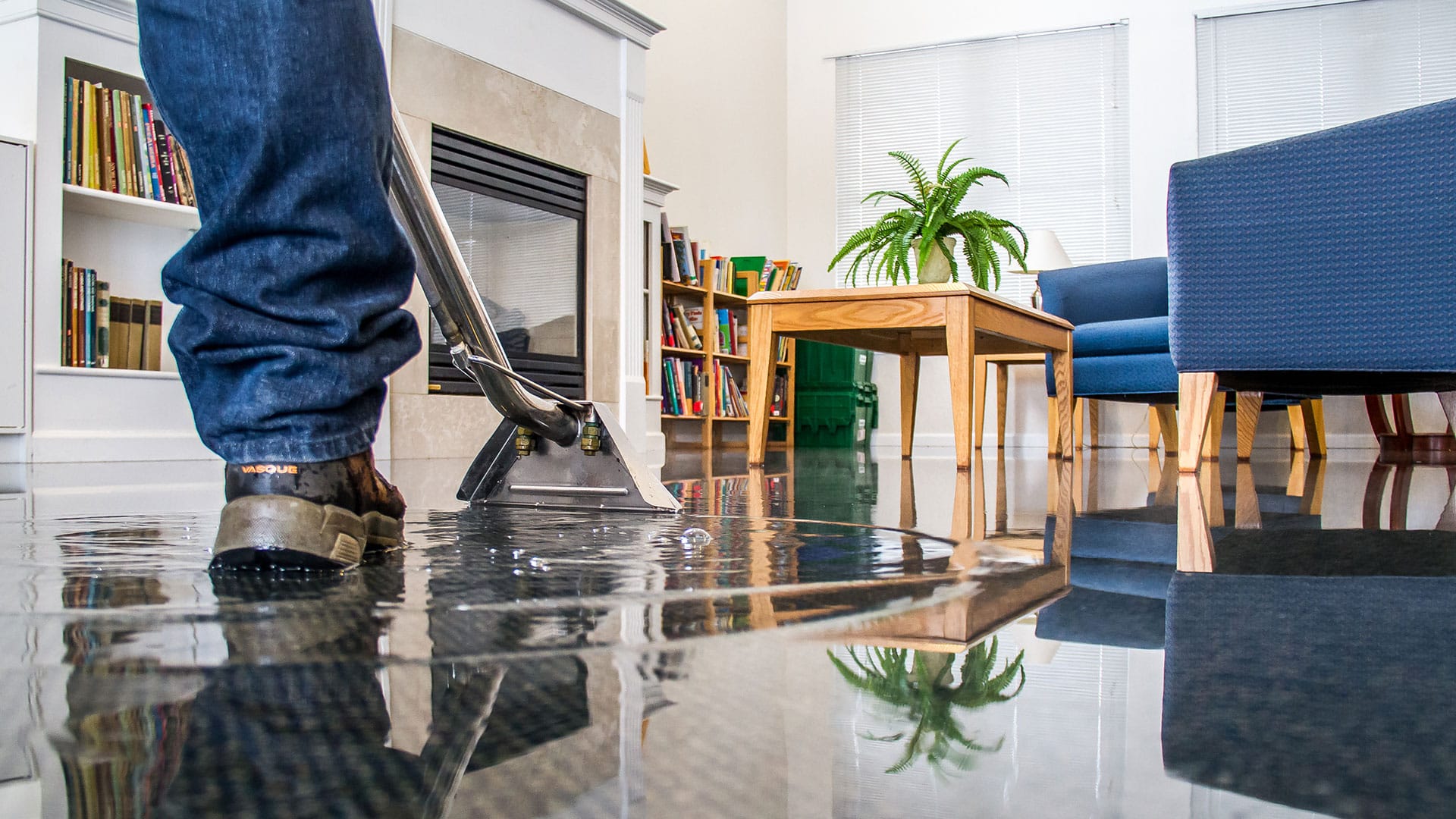What makes Water Damage Restoration essential after a flood?
Water Damage Restoration 101: Understanding the Process and Expense
Water damage can strike unexpectedly, leaving house owners in a state of complication. Recognizing the restoration procedure is necessary for effective recuperation. From evaluating the damage to picking the best provider, each action influences the general outcome and price. Factors such as the type of water damage and urgency likewise play a considerable duty. What are the certain techniques used in restoration, and just how can one plan for potential expenses?
Kinds Of Water Damage

First Analysis and Examination

Water Extraction Methods
Following the preliminary evaluation, reliable water extraction methods are used to minimize damage and prevent further issues. These strategies involve using customized devices such as submersible pumps and industrial-grade vacuum cleaners - Water Damage Restoration. The option of method depends on the volume of water present and the sort of products impacted. For standing water, submersible pumps are generally used for rapid removal, while vacuums are excellent for removing water from carpetings and furniture. Furthermore, progressed techniques like water extraction floor coverings might be employed for hard-to-reach locations - Water Damage Restoration. The goal is to get rid of as much water as possible, decreasing the potential for mold and mildew development and architectural damage. Trigger and efficient water extraction is important in the general water damage repair process
Drying and Dehumidification Process
When the water extraction is complete, the drying and dehumidification process becomes crucial to bring back the damaged location. This phase commonly uses industrial-grade dehumidifiers and air moving companies to effectively reduce moisture levels. The dehumidifiers reel in damp air, eliminating excess humidity, while air movers circulate air to increase evaporation. Monitoring equipment is commonly used to track moisture and temperature level levels, ensuring excellent drying problems. The duration of this procedure can differ depending on the extent of the water damage and environmental aspects. It is crucial to thoroughly dry all impacted materials, including wall surfaces, flooring, and furnishings, to avoid mold and mildew development and structural damage. Proper implementation of this step is essential for an effective repair result.
Cleansing and Sterilizing Damaged Locations
As soon as the drying out process is complete, a thorough preliminary analysis and evaluation of impacted locations is crucial to identify contamination degrees. Efficient cleaning techniques and ideal products must then be utilized to eliminate particles and stains. Lastly, sanitization and sanitation techniques are essential to ensure that damaging virus are removed, bring back the space to a safe problem
Preliminary Assessment and Examination
Prior to starting any kind of repair efforts, an extensive initial evaluation and examination of the affected areas are crucial for effective cleansing and disinfecting. This procedure entails identifying the level of water damage, determining the resource of the water invasion, and examining the materials influenced. Inspectors usually look for indicators of mold and mildew development, structural stability issues, and damaged personal belongings. The evaluation also consists of inspecting wetness degrees making use of specific tools to ensure no concealed water pockets continue to be, as these can bring about additional difficulties. Documenting the searchings for is crucial for preparing the next steps in the reconstruction procedure. An in-depth first evaluation allows restoration specialists to develop a targeted strategy for efficient cleaning and disinfecting, eventually lessening damage and wellness risks.
Cleansing Methods and Products
Effective cleansing and disinfecting of water-damaged locations need a variety of products and techniques customized to the details materials influenced. For permeable surfaces like drywall and carpets, extraction techniques are important to remove excess wetness, adhered to by deep cleaning with specialized cleaning agents. Non-porous products such as floor tile or metal can be cleaned utilizing commercial-grade cleansers that effectively remove pollutants. Steam cleansing is another effective method, especially for carpets and furniture, as it utilizes heats to remove microorganisms and mold and mildew (Water Damage Restoration). In addition, environmentally friendly items are significantly prominent for their safety and efficiency - Water Damage Restoration. Inevitably, choosing the ideal cleaning approaches and products not only assures instant tidiness but also aids in stopping more damage and carcinogen related to water invasion
Sanitization and Disinfection Techniques
When resolving water damage, appropriate sanitization and disinfection methods are necessary to assure the safety and wellness of the afflicted environment. After first cleaning, surfaces have to be treated with ideal disinfectants to eliminate pathogens, mold and mildew, and germs that thrive in damp problems. Usual techniques include the use of EPA-approved chemical anti-bacterials, which can be applied through splashing or wiping methods. In addition, ultraviolet (UV) light systems can efficiently sterilize locations by counteracting microbes without rough chemicals. The selection of technique often relies on the sort of products impacted and the degree of contamination. Ultimately, comprehensive sanitization not only recovers a risk-free home yet likewise assists stop future wellness risks connected with lingering moisture and mold and mildew growth.

Repair Services and Restoration Options
Assessing the damage caused by water direct exposure is crucial for figuring out the ideal repairs and remediation alternatives. Property owners may face various problems, consisting of harmed drywall, deformed floor covering, and jeopardized architectural aspects. Depending upon the level of the damage, fixings may involve changing areas of drywall, installing new floor covering, or reinforcing architectural beams. In cases of extreme damage, complete substitute of afflicted materials could be required. Furthermore, specialist restorers typically advise making use of wetness meters to analyze concealed dampness levels before selecting the finest strategy. It is essential to act quickly to avoid mold development and further wear and tear. Picking the ideal options not just recovers the residential property yet likewise ensures lasting security and performance.
Elements Influencing Restoration Prices

The level of water damage directly impacts the repair costs house owners can anticipate to incur. Elements such as the source of the water, the duration of direct exposure, and the damaged products greatly influence rates. For example, tidy water damage from a busted pipeline is usually much less pricey to bring back contrasted to damage triggered by sewage. Furthermore, the level of contamination determines the demand for specialized cleansing and disposal solutions, additionally enhancing expenditures. Geographical place also contributes, as local labor prices and availability of repair services can vary. The urgency of the action affects expenses; quicker treatments typically lead to decrease overall costs by stopping more damage. Comprehending these elements is crucial for property owners when approximating remediation prices.
The three key kinds of water damage are categorized based on contamination levels: clean water, gray water, and black water. A comprehensive preliminary analysis and examination are essential steps in the water damage reconstruction procedure. For standing water, submersible pumps are generally used for quick removal, while vacuums are suitable for drawing out water from carpets and furniture. The degree of water damage directly influences the restoration sets you back home look here owners can anticipate to sustain. Tidy water damage from a busted pipe is typically less pricey to restore contrasted to damage created by sewage.